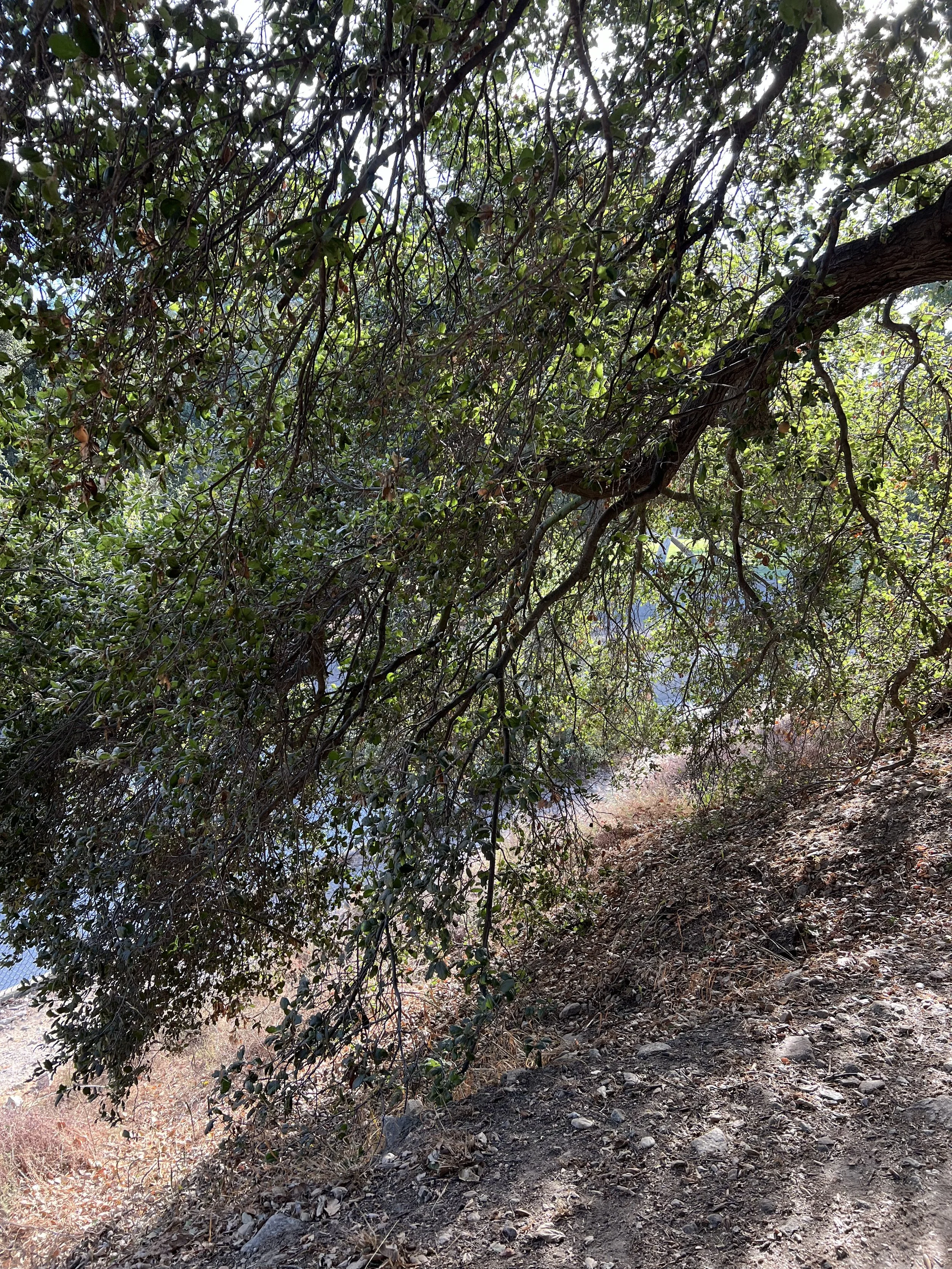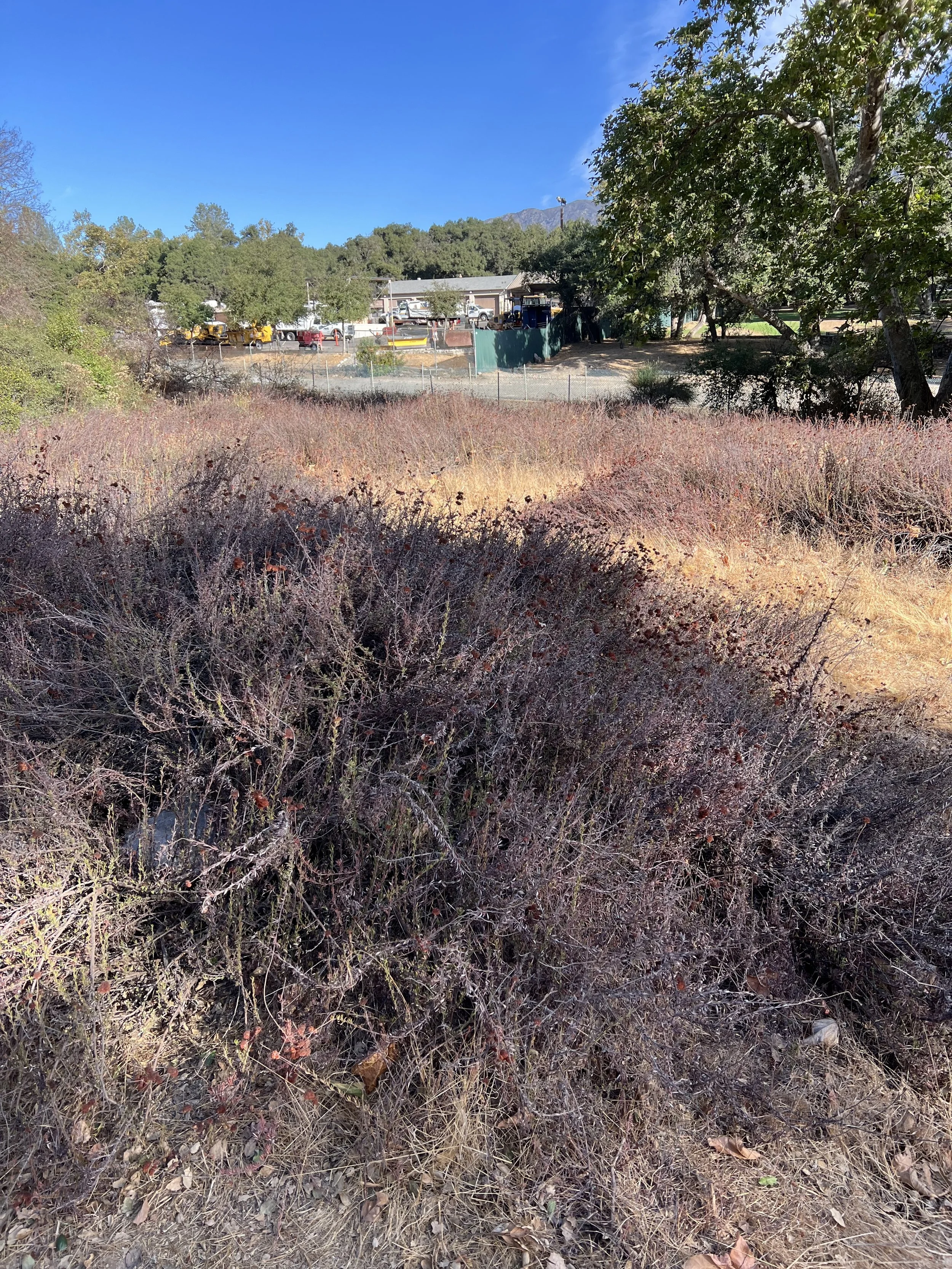Notes from a Native Plant Walk
The morning of October 19, I had the pleasure of joining local group Active CV for their Native Plant Walk which took place in La Crescenta, California at the Crescenta Valley Park. During the walk, I learned a great deal about the natural environment close to my own home that I am excited to share with the Vera community, especially those members living in this area.
Our guide for the morning was Frank Colcord who also acts as a host & docent at the Rosemont Nature Preserve. First, he introduced us to the Crescenta Valley park by describing its three major biomes: riparian, oak woodland, and coastal chaparral. We saw many examples of plants native to these biomes throughout the walk.
The first striking feature was a grove of coast live oaks with a large Western Sycamore in the center. The coast live oak is a keystone species to this area and can live for a hundred or more years, which means that many of the trees we were looking at were alive at the time the indigenous Tongva communities were present. The Tongva used acorns from the oaks as food by turning them into a type of flour. Another interesting fact of this tree is that their branches can come down to the ground in what looks like a “skirt”. This cools the shaded area by up to 10 degrees creating its own mini-natural environment.
Once we walked down the path behind the Verdugo wash we saw many plants belonging to California’s famous chaparral biome. Frank pointed out the rusty red buckwheat shrub and noted that in the spring and summer it turns a brilliant creamy white and pink. Buckwheat is so plentiful in the area that locals can tell what season it is by when driving on California State Route 2 (“The 2”) by the color of the east side of the hills.
Frank also pointed out the laurel sumac which has adapted very well to the drier environment, partly by the taco-like shape of their leaf. These plants are fire tolerant and can shut down during a fire only to restore afterwards. We then spotted another drought-tolerant plant: the “toyon” (Heteromeles arbutifolia). We learned that the toyon grows small red berries at certain times of year resembling holly. Legend has it that their holly-like berries may have inspired the “Hollywood Hills” name.
We look forward to Vera Society participating in these kinds of educational events in the future!



